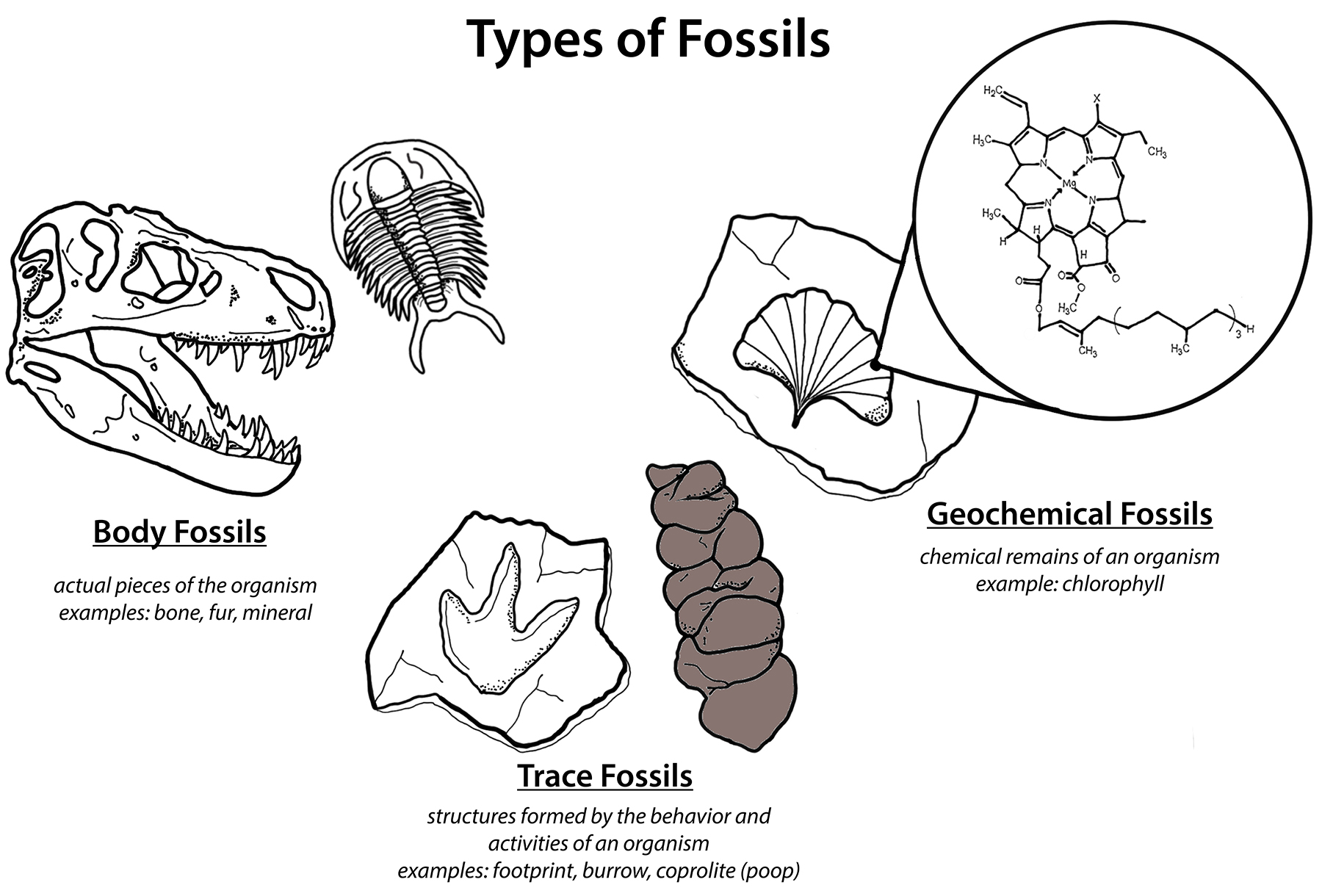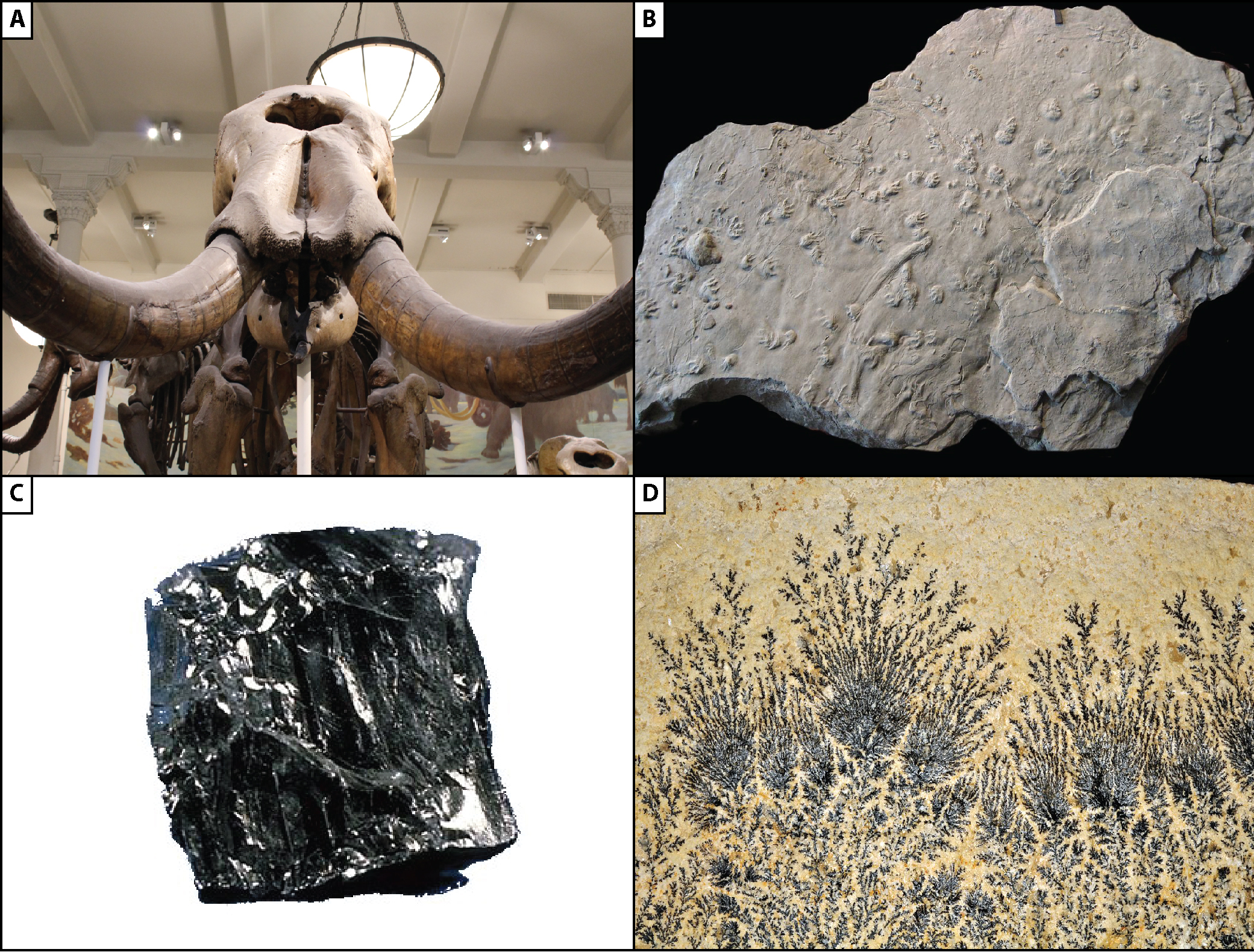9.1: Types of Fossils
- Page ID
- 20430
Despite the incredible diversity and complexity of the fossil record, we can lump fossils into three main types:

Figure \(\PageIndex{1}\): Types of fossils (Page Quinton via Wikimedia Commons; CC BY-SA 4.0).
Body fossils are preserved portions of the actual body parts of plants, animals, and other organisms. They include a wide variety of types including bones, teeth, scales, feathers, hair, shells, soft tissue (skin, muscle, etc.), as well as wood, roots, leaves, seeds, and may others.
Trace fossils are structures that are formed by the activity of an organism and commonly include features that disrupt layers of sediment (tracks, trails, burrows), erosion (boring, scraping, orbiting), the creation of layering or organization (various types), and even fossilized excrement (coprolites). Trace fossils record a wide variety of behaviors including feeding, resting, movement, dwelling and many others. Its worth noting that growth is not a behavior, so things like roots and stromatolites are best considered as body fossils.
Geochemical fossils are subtle chemical clues that are created by organisms and preserved in the geologic record. Perhaps the most common example is a mineral or rock that is enriched in carbon-12 because of the activity of photosynthetic organisms.
And, with practice, you will learn to spot pseudofossils which are crystals, sedimentary structures, weathering features, or other types of inorganic features that resemble body fossils or trace fossils.

Figure \(\PageIndex{2}\): The three main types of fossils and something that isn't. A) Body fossils include things like this mammoth skull (Rodrigo Alomía Díaz via Wikimedia Commons; CC BY-SA 4.0). B) Trace fossils include features like these amphibian trackways preserved on the base of a bed of sandstone (Michael Rygel via Wikimedia Commons; CC BY-SA 3.0). C) Even if no recognizable plant material is preserved, coal could be considered a geochemical fossil because it is enriched in 12C (U.S. Geological Survey via Wikimedia Commons; public domain). D) Although they look like plants, these manganese dendrites are pseudofossils composed of completely inorganic branching crystals. (Géry PARENT via Wikimedia Commons; CC BY-SA 3.0).

